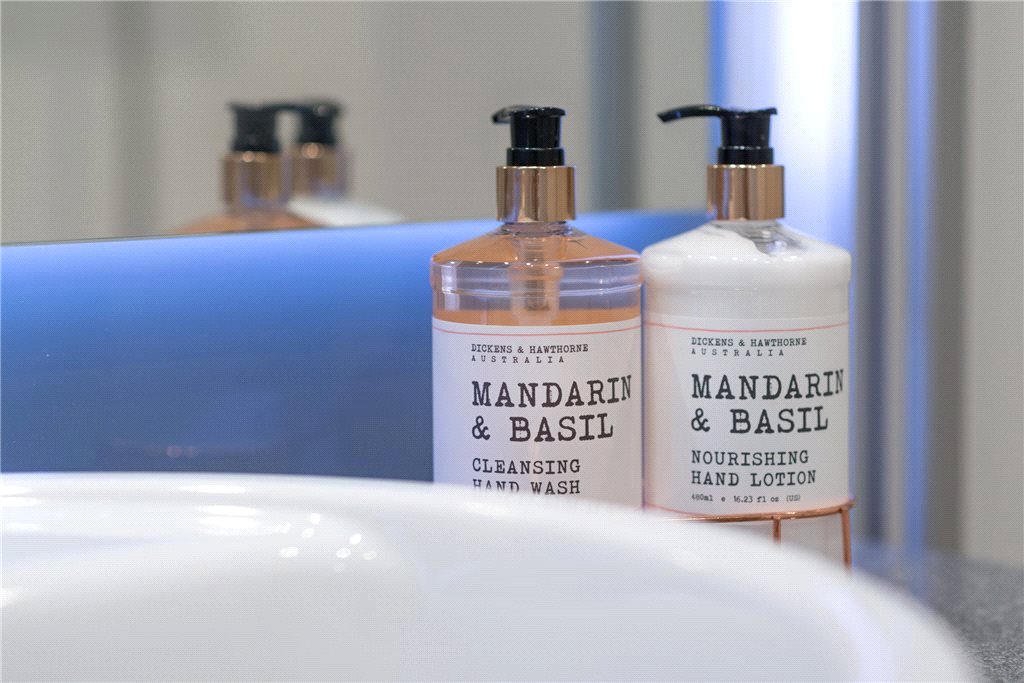On the surface, Clarendon Quarter has everything a young professional could want.
One-bed studio apartments with lack of space and amenities compensated for with communal facilities? This sounds a lot like student halls
The developers' website proudly displays a slideshow of light, airy apartments, decked out in the type of fabrics and geometric patterns and Pantone hues you might admire through the window of Oliver Bonas, before you catch a rose-gold reflection of your nose pushed against the glass which makes you recoil.
It teases with talk of wood-effect floors running through the property, floor-to-ceiling windows in the living areas, and glossy, fully-fitted kitchens with all mod-cons. There’s even Mandarin and Basil hand lotion in the bathroom - delicious!
 Your hands will smell like a Botanist cocktail!
Your hands will smell like a Botanist cocktail!Stunning landscape gardens and roof terrace with this kind of proximity to the City Centre make this a dream first-buy for young professionals - except, that’s not an option.
Clarendon Quarter is a built-to-rent development from LIV, a property development who claim to be “redefining the private rented sector” with such projects that use a “holistic approach” to private letting by retaining ownership and management of the buildings.
“Clarendon Quarter was designed with residents in mind” continues the apartment listing - “with an onsite concierge, a residents' gym with state of the art equipment, a large laundry area complete with washing machines and dryers and a residents' club lounge on every floor.”
 One of Clarendon Quarter's communal areas
One of Clarendon Quarter's communal areasHang on, one-bed studio apartments with lack of space and amenities compensated for with communal facilities? A gated community with fob access and concierge reception? This sounds a lot like student halls; LIV are filling cities with accommodation intended as a temporary stop-gap for 18-19 year olds.
Not that there’s anything inherently wrong with that - there’s a certain appeal to such communal living arrangements, especially in these times of increased social isolation and a breakdown of work/social life barriers. The problem lies with the type of resident they’re targeting.
Ten-to-fifteen minutes walk from the LGI, University of Leeds, and the City Centre, Clarendon Quarter is conveniently placed for NHS, education, and retail staff - “Key workers”, as LIV refer to them in their blurb.
There’s a few more professions included in that as well - Emergency services, Government, Postal workers, basically the people instrumental in keeping society ticking over from day-to-day, and they’re are the only professions eligible to rent an apartment in Clarendon Quarter.
Potential residents will also be means-tested. Not to make sure they earn enough to afford to pay the rent - these “key workers” are mid-range earners, some of whom will be in the 40% tax band, they’re good for it - no, means-testing is in place to make sure nobody who lives there earns more than £30,000 PA gross.
 £675 worth of Clarendon Quarter lounge
£675 worth of Clarendon Quarter loungeIdealists might interpret this as a method of providing low-cost housing to those who need it most. Cynics will take a look at the rent costs of the apartments - starting at £525 and going up to £775 per month for a one-bed with mezzanine, this is hardly low-cost public housing. Take into account council tax (Band A in LS3), utilities, and internet, and monthly living costs start to reach £650-£900 per month - roughly 46-64% of a newly qualified nurse’s income, or around 35-50% that of a Band 5 nurse’s, which is the highest pay scale achievable before hitting LIV’s £30,000 wage-cap.
And that’s where Clarendon Quarter’s true, murky colours start to show, polluting the muted teals and mustards of those Orla Keeley throw-cushions in the photos on Zoopla.
Residents are lured in by the attractive facilities which make the apartments seem price-competitive when compared to other proportions in the postcode, but they still represent a high enough cost to prohibit regular saving. LIV recognises key workers’ social and economic worth, while prohibiting them from working towards the security of property ownership.
Key workers - those who work the longest hours, and already have the blurriest barrier between work and social lives - are being encouraged towards the city centre, so they can easier access their places of work (or vice versa…) but still just far out enough so that they’re out of the way. Much like shanty towns on the outskirts of Dubai that hide service-industry staff away when they're not serving the super-rich.
It might look impressive in photos, but look past the Habitat sofas, Eames chairs, and liquid soap that makes your hands smell like a Botanist cocktail, and Clarendon Quarter is nothing more than the first step in normalising the creation of city centre labour ghettos.
Images copyright LIV 2016


